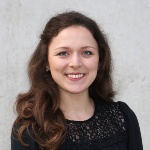Project description
The Cluster of Excellence aims to utilize the full potential of digital technologies to redesign planning and construction. Architecture is of great importance as a central component of the built environment, especially in regard to the growing demand for living space in the coming years. Through an integrative and interdisciplinary approach, innovative methods and processes are to be developed that enable a modern, sustainable and liveable built environment. Particular emphasis is placed on cooperation between architecture, civil engineering, robotics, materials science and other disciplines in order to promote a new building culture.
For the construction sector, it is essential to apply more cost- and energy-efficient methods, reduce material waste and increase the use of CO2-neutral materials such as wood. This can be achieved by developing methods that integrate architectural, design and building physics criteria in a continuous exchange with novel manufacturing and construction techniques.
In the preceding project, a timber construction system was developed that comprises flexible, multifunctional and geometrically adapted column, wall and ceiling elements. These elements can be manufactured at any location using robot technology, ensuring a high degree of flexibility and adaptability.
The methods developed in the preceding project are now being further enhanced. The focus is on expanding the building stock and investigating flexible strategies for the timber system based on comprehensive benchmark and synthesis studies. In addition, the interdisciplinary design methods are to be further refined and optimized using additional parameters. Before timber construction systems can be used in buildings and in the extension of existing building stock, they must meet building physics requirements, among other demands. Aspects such as the susceptibility of wood to moisture and the high level of sound transmission are important building physics issues that lead to new construction solutions during the interdisciplinary design process.
Project information
- Förderkennzeichen
-
GEPRIS-Projektnummer 390831618
- Förderprogramm
-
Exzellenzcluster EXC 2120 "Integrative Computational Design and Construction for Architecture (IntCDC)"
- Förderzeitraum:
-
2022 - 2025
- Gefördert durch:
- Projektpartner*in
-
- Institute for Computational Design and Construction (ICD), University of Stuttgart
- Institute for Building Structures and Structural Design (ITKE), University of Stuttgart
- Materials Testing Institute (MPA), University of Stuttgart
Contact

Philip Leistner
Prof. Dr.-Ing.Director




